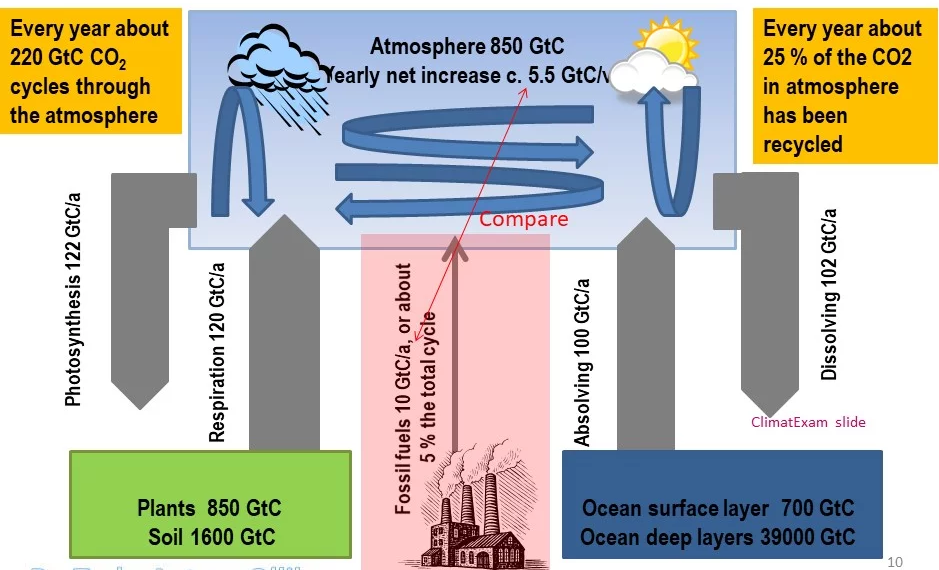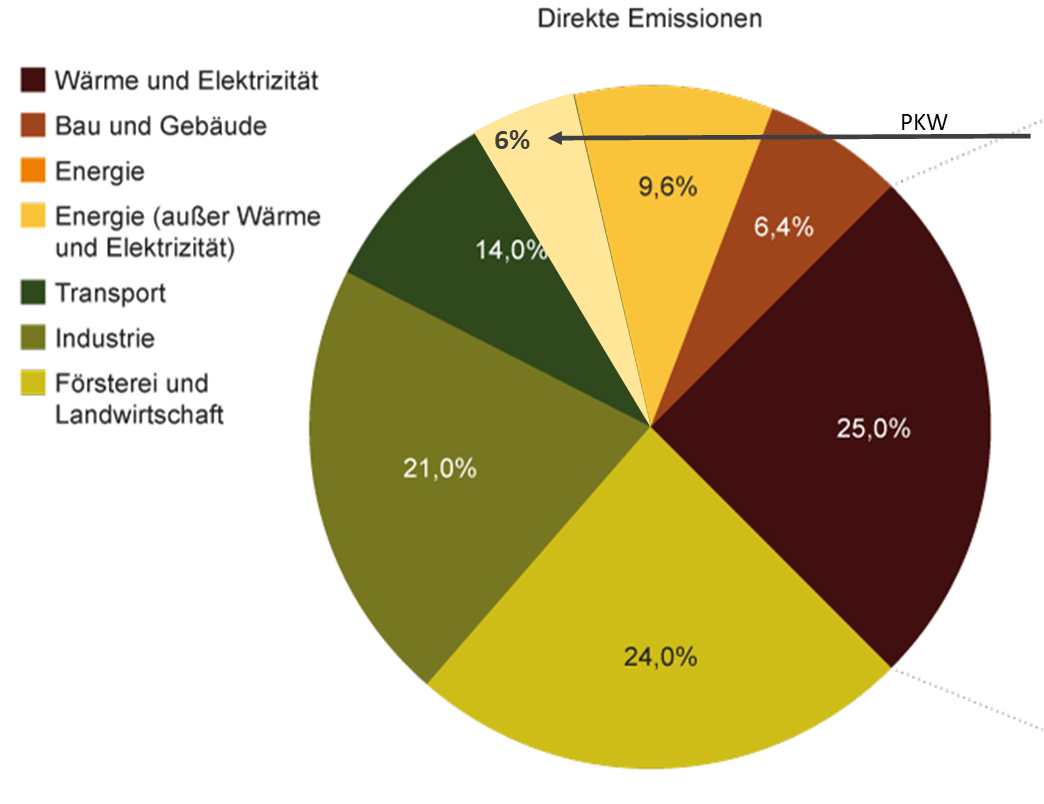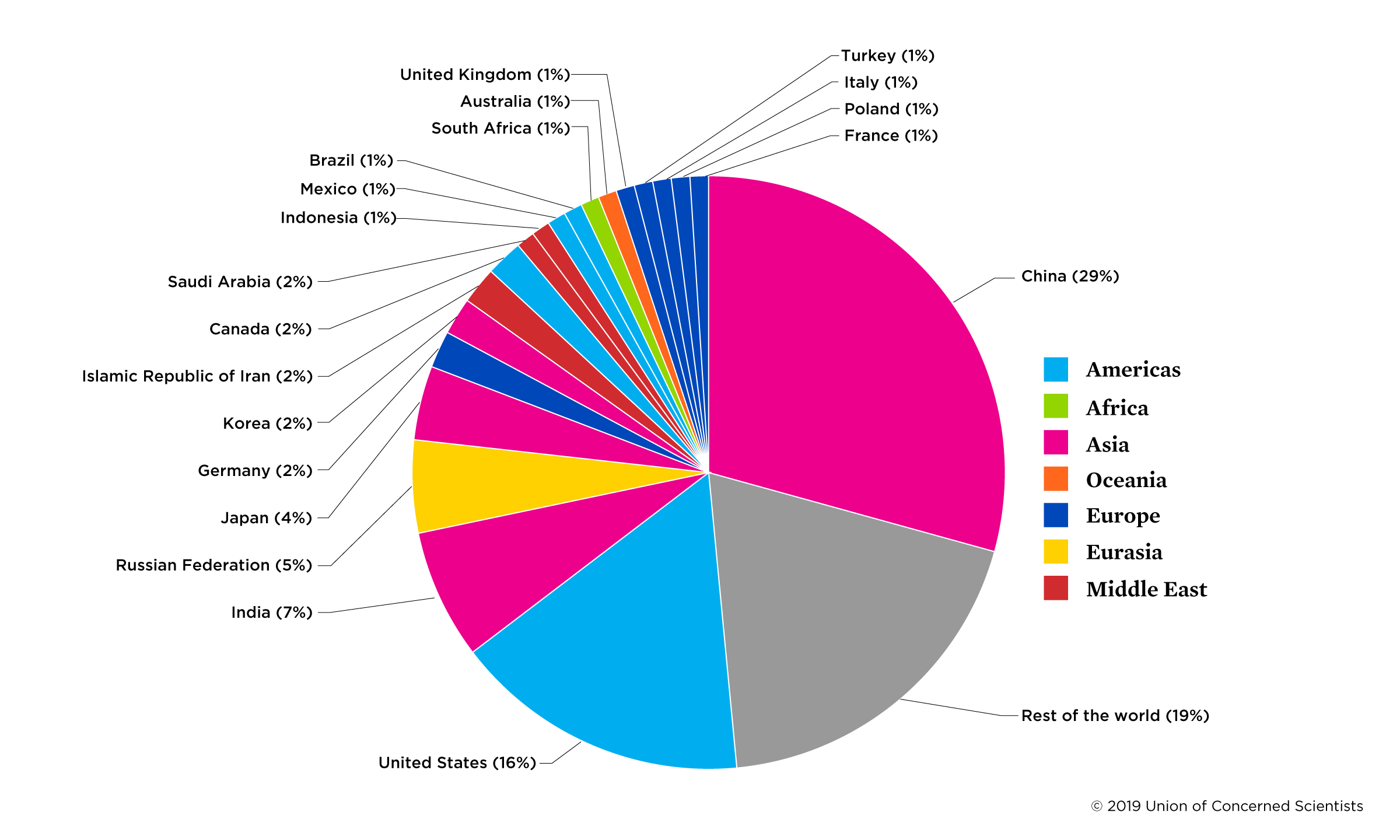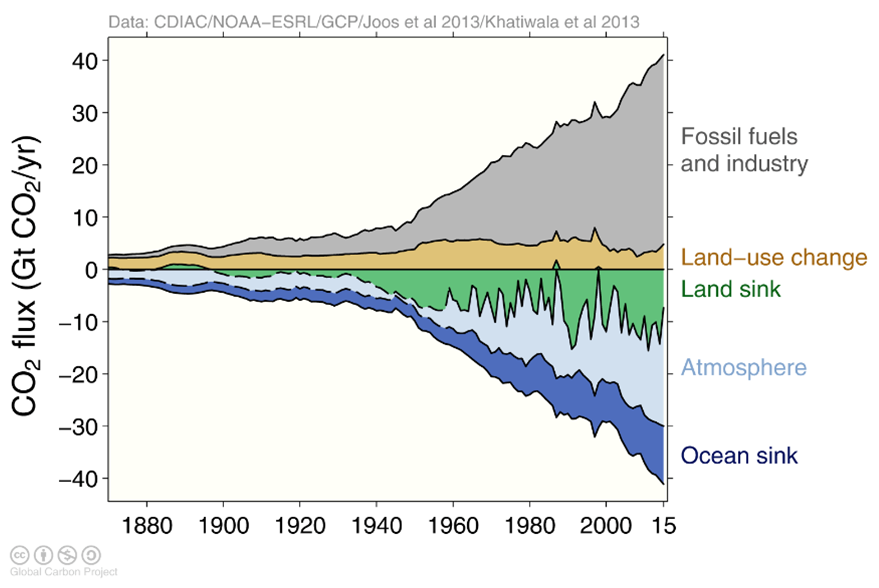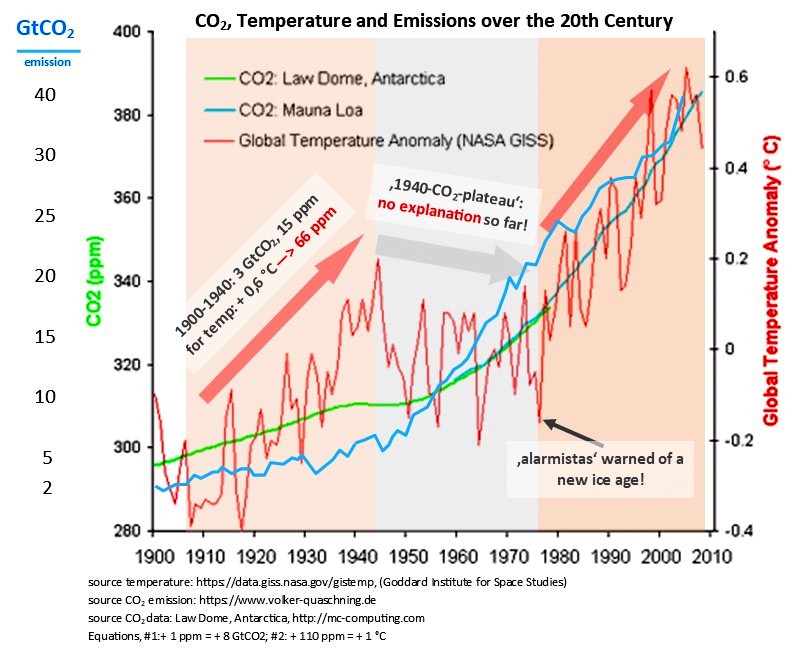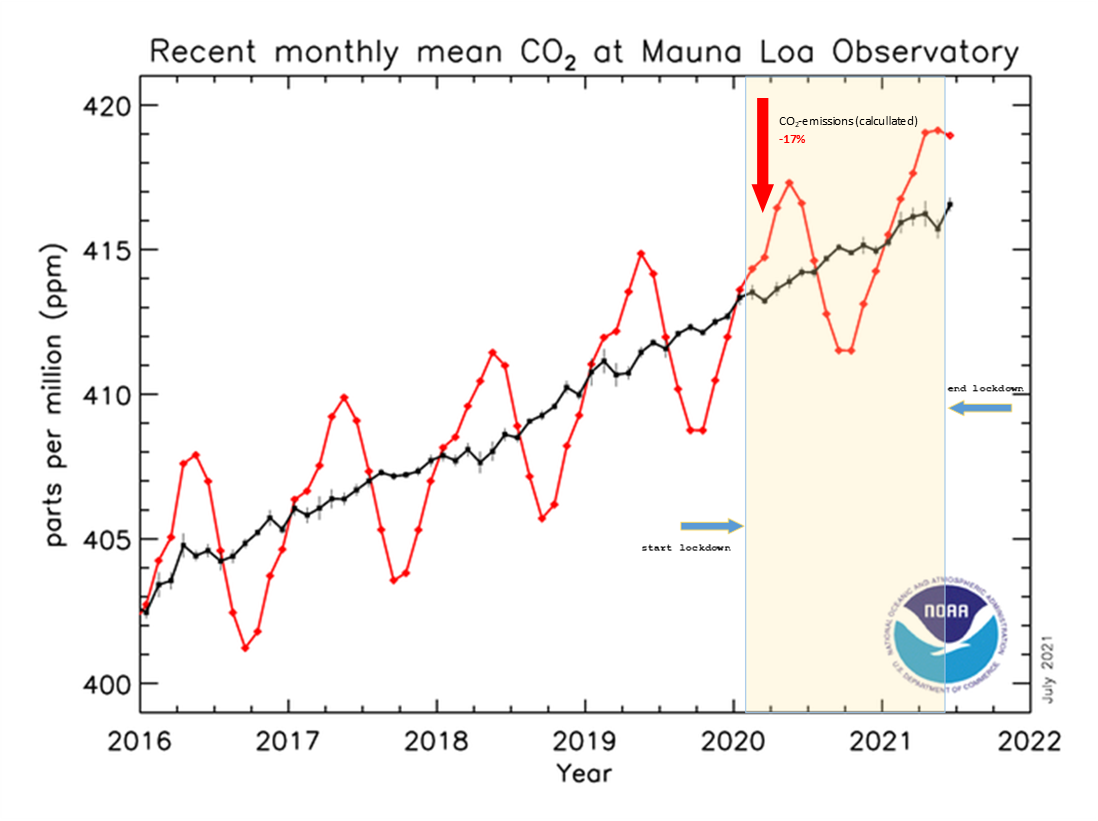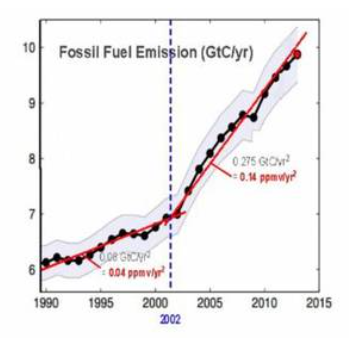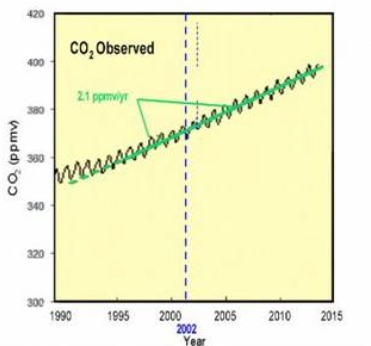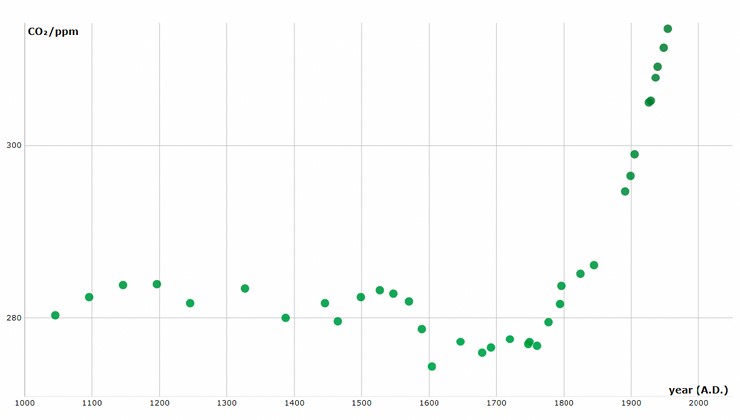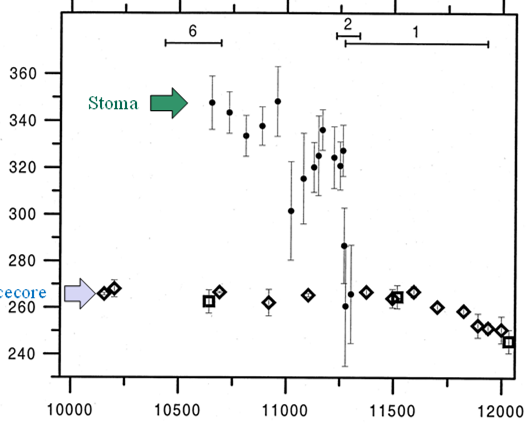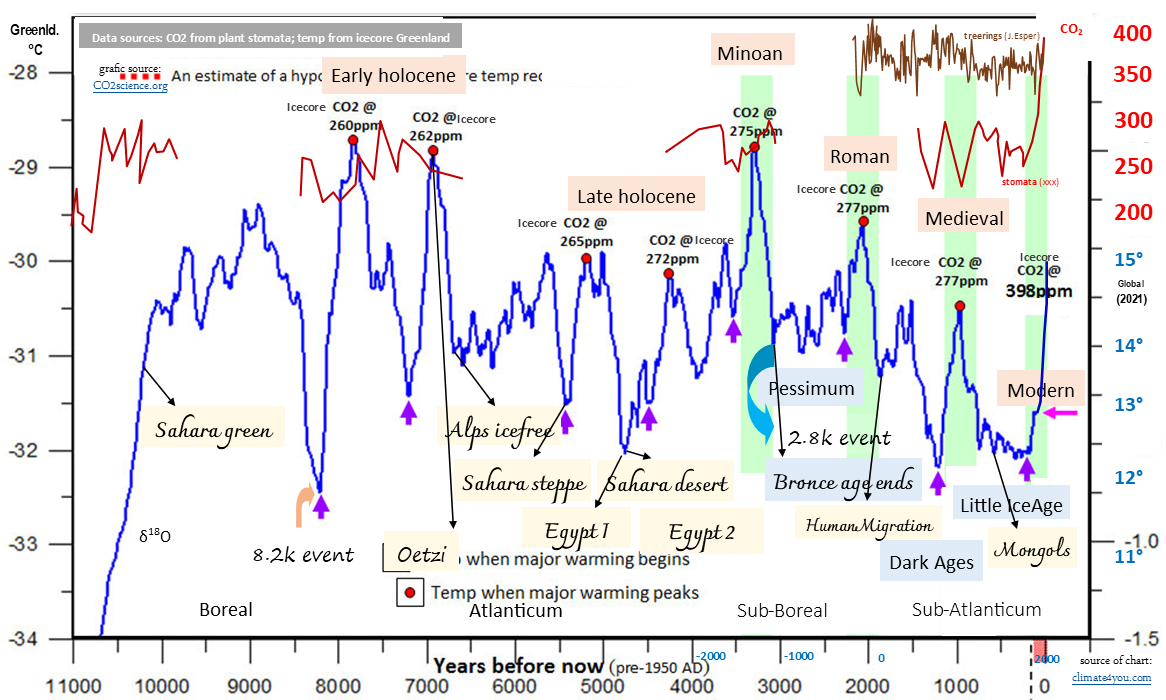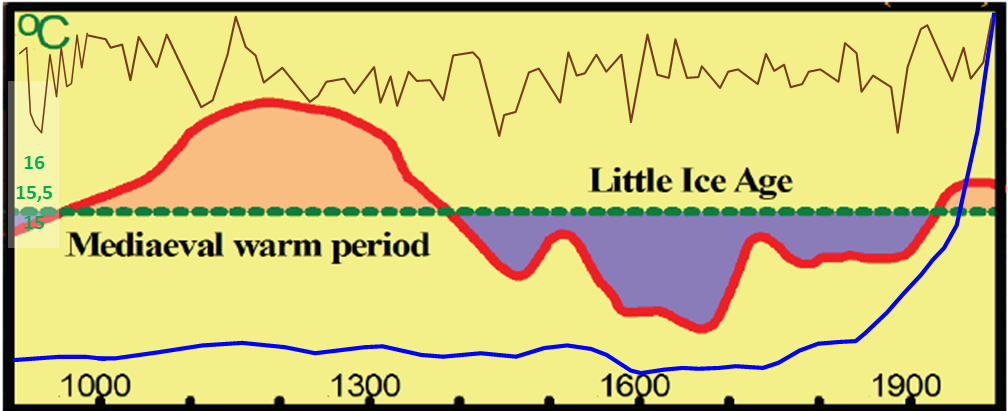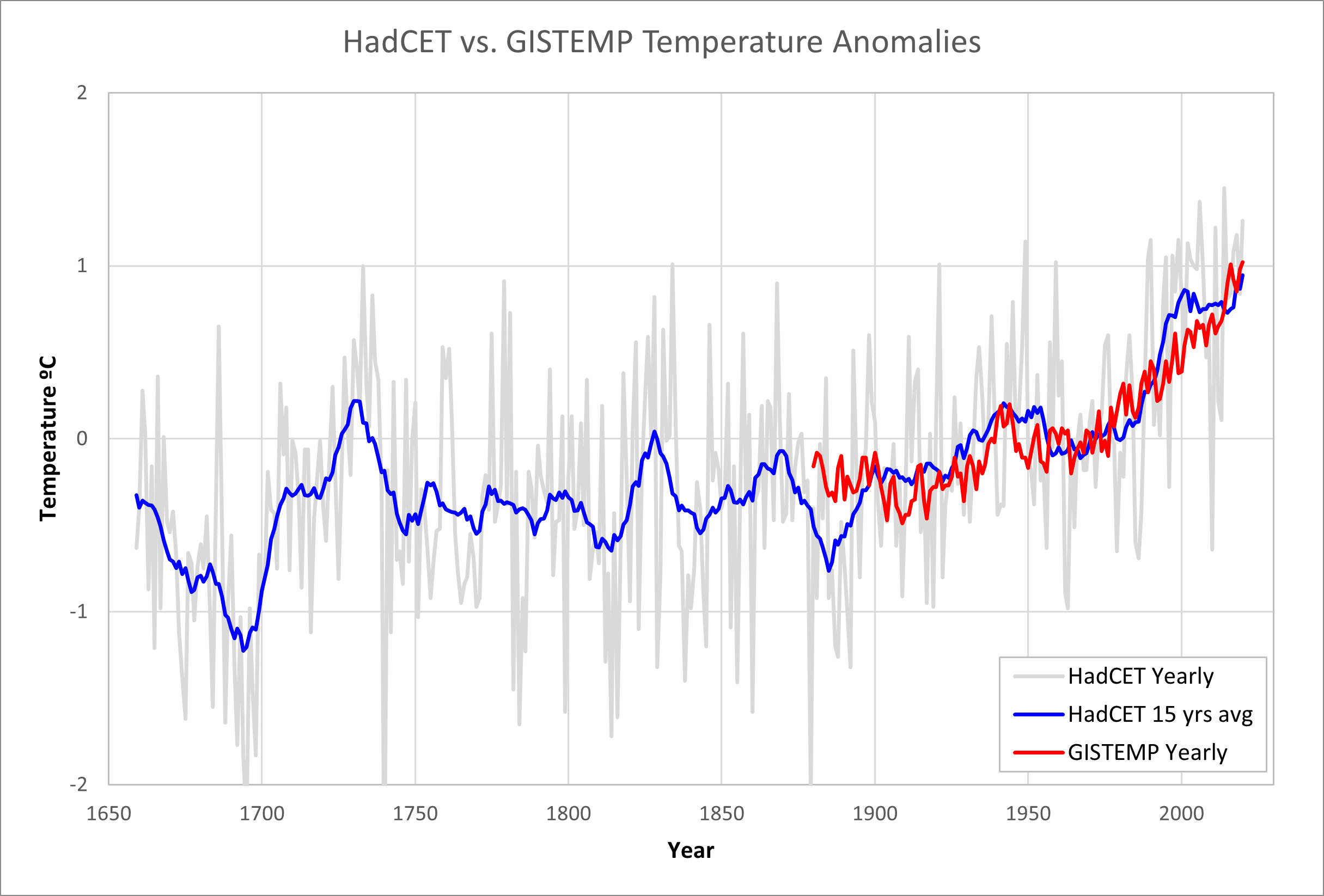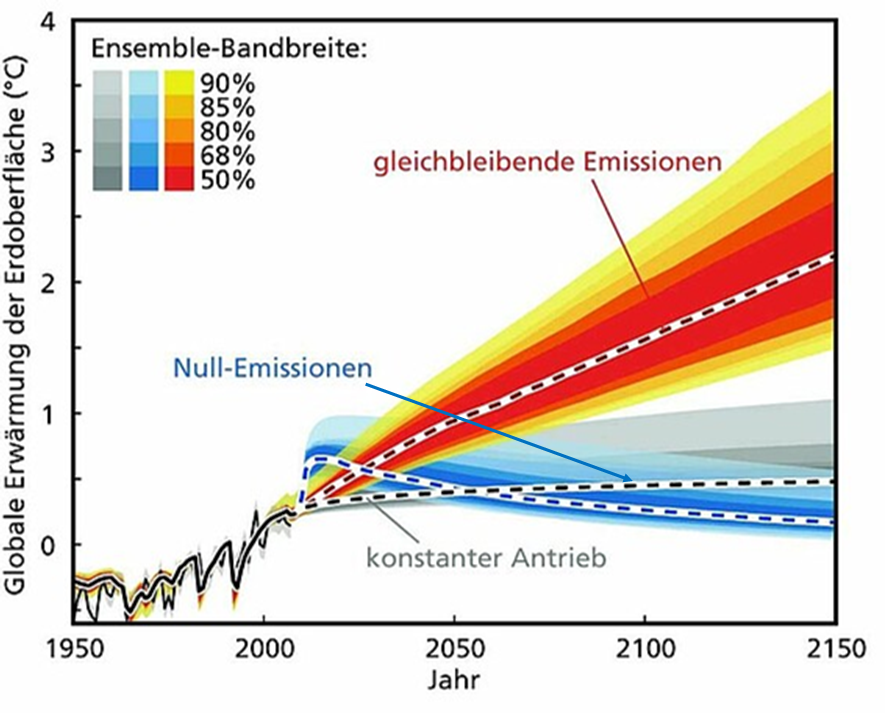
Dezember 30, 2022
Wärmespeicherung: 20 x weniger als Methan
Wellenlängen: 2,8 µm, 4,5 µm, 15 µm
Frequenzen (ν): 663 cm-1, (800 cm-1, 1100 cm-1)
Carbon:
Radioaktivität: δ 12C Natürliches Carbon; ratio: 98.9%
δ 13C Isotop; ratio: 1%
δ 13C of fossil-fuel: CO2: −24 (1750) to −28 (2010)
δ 13C of ocean surface water: 2.5 (1750) to 1.5 (2010)
δ 13C of the terrestrial biosph.: −25
δ 14C Radiocarbon: ratio: 1,25·10−10% (1 pro 1 Billion 12C)
δ14C ---> -50% nach 5.73 Ka
(cosmic rays create 8 kg of 14C per year)
Umrechnung C in CO2: 1 Gt C = 3.7 Gt CO2
Atmosphäre: 800 Pg ( 1012 kg) CO2 total
emittiert: 2400 GtCO2 to date
+8 Gt CO2 ergibt +1 ppm
880 Gt CO2 (110 ppm) in die Atmosphäre ---> +1°C
Temperatur: +110 ppm = +1°C
2020: 412 ppm --> 415 ppm = 3 ppm = +24 Gt CO2
Meer: Volumen 1,4 x 109 km3; 1,4 x 1015 Liter
Bis 2018, anthropogene Emission = 1620 Gt CO2
kumulative „Airborne Fraction“ = 54%
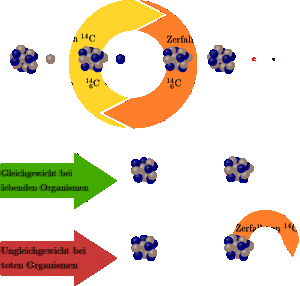
CO2-Molekül: IR
wl: 2,1; 2,8; 4,5; 15 (µm)
Fr: 663; 800; 1100 (cm-1)
Auch wenn C02 einen geringen wärmenden Einfluss auf die (ruhende) Atmosphäre hätte, wird diese Wärme weitgehend wieder in den Weltraum abgestrahlt, unterstützt durch die starken horizontalen und vertikalen Windströmungen (die in der Theorie nicht dargestellt und daher nicht berücksichtigt werden können....(Dr. Dietrich E. Koelle)
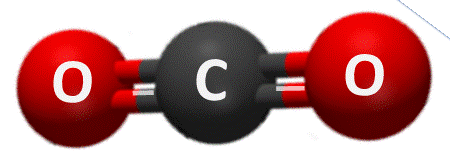
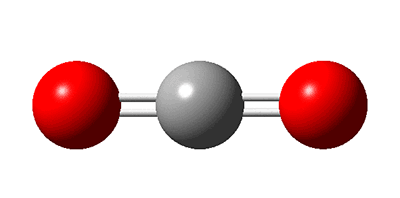
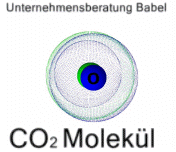
|
mol |
H2O |
CH4 |
CO2 |
NO2 |
SF6 |
|
ppm |
20000-1000 |
1,8 |
395 |
0,32 |
-- |
|
stay |
eternal |
5a-10a |
500a-1000a (flux) |
100a |
3 Ka |
|
climasens |
3 |
20 |
1 |
300 |
23000 |
|
CO2-gesamt global (0,04% w/w) |
CO2-anthropogen Anteil (3,5% w/w) |
CO2-Anteil DE (2% w/w) |
CO2-Anteil Transport DE (14% w/w) |
|
0,04% (412 ppm) |
0,0014% (14 ppm) |
0,00003% (0,3 ppm) |
0,000004% (0,04 ppm) |
Zusammensetzung Atmosphäre
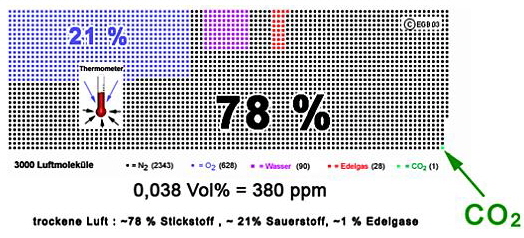
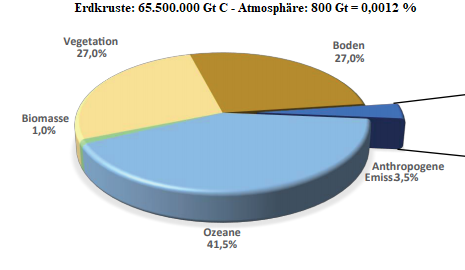
In der Erdkruste sind rund 65.500.000 Gigatonnen Kohlenstoff gespeichert.
In der Erdatmosphäre befanden sich 2008 etwa 3.000 Gigatonnen CO2.[3] Dies entspricht ca. 800 Gigatonnen Kohlenstoff – also etwa 0,0012 Prozent der Menge im äußeren Gestein der Erde.
Oxygen:
Natürliche Isotope: 16O (99,76%); 18O (0,2%)
δ18O = 18/16 (Delta-O-18) ---> angereichert=warm, abgereichert=kalt
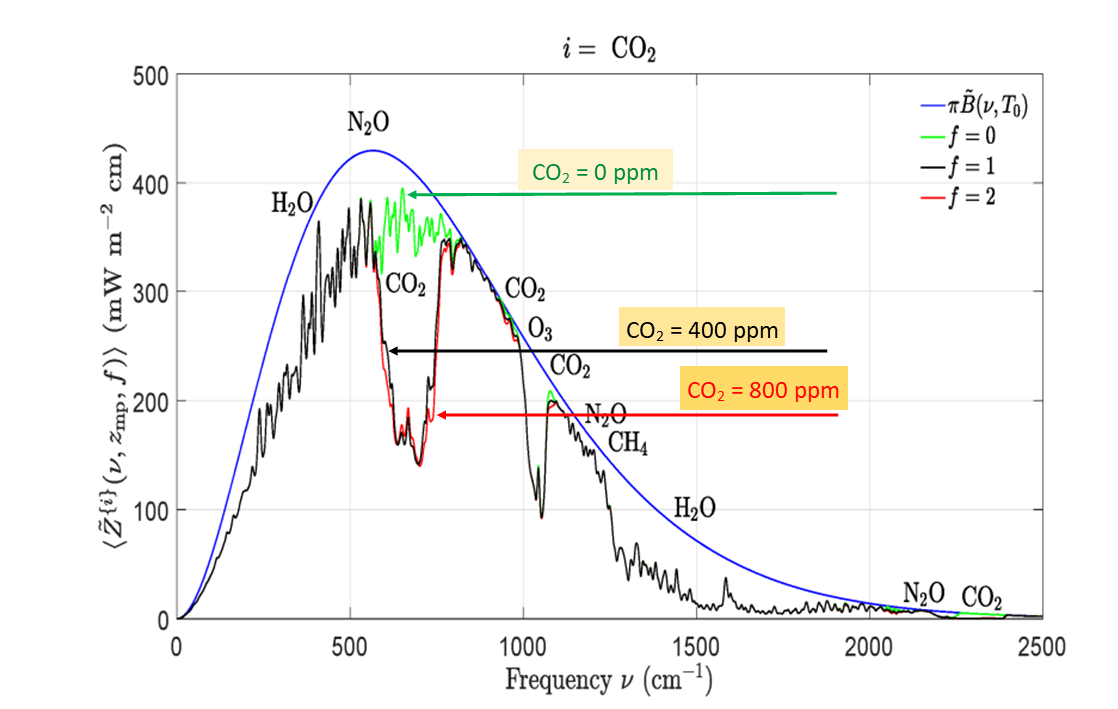
CO2-Absorptionssättigung
(Lambert Beer’sches Gesetz)
The smooth blue line is the spectral flux, Z˜ = πB˜(ν, T0) from a surface at the temperature T0 = 288.7 K for a transparent atmosphere with no greenhouse gass.
The green line is hZ˜{i} (ν, zmp, 0)i with the CO2 removed but with all the other
greenhouse gases at their standard concentrations. The black line is hZ˜{i}(ν, zmp,
1)i with all greenhouse gases at their standard concentrations. The red line is hZ˜{i}(ν, zmp,
2)i for twice the standard concentration of CO2 but with all the other greenhouse gases at their standard concentrations
Doubling the standard concentration of CO2 (from 400 to 800 ppm) would cause a forcing increase (the area between the black and red lines) of ∆F
{i} = 2.97 W m−2 = 0,9% (from 342 W m-2)
Quelle
|
No |
Quelle |
Emission |
% |
Absorption |
|
1 |
Öl, Kohle, Gas, Zement |
28 |
3,8 |
|
|
2 |
Biologie |
440 |
58 |
455 |
|
3 |
Ausgasung Süßwasser |
3,7 |
0,5 |
|
|
4 |
Ozeane |
289 |
38 |
296 |
|
5 |
Landnutzungsänderung |
3,7 |
0,5 |
|
|
6 |
Atmosphäre |
-- |
-- |
15 |
|
gesamt |
766 |
100 |
766 |
Quelle: IPCC
